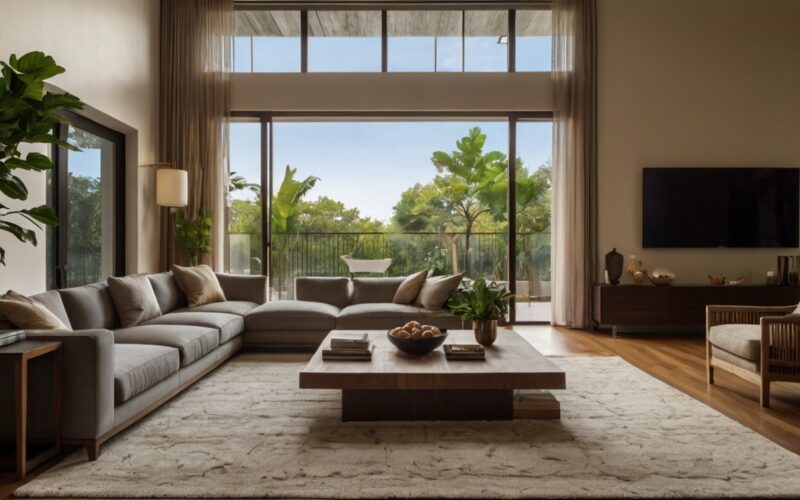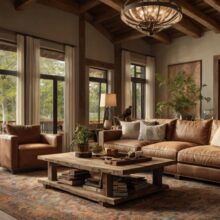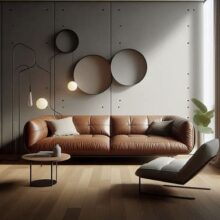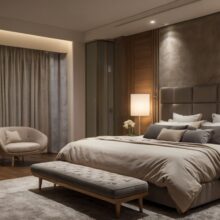Incorporating Natural Light into Your Home – Brighten and Elevate Your Mood

Incorporating Natural Light into Your Home – Brighten and Elevate Your Mood
Natural light is one of the most powerful and underappreciated tools in home decor. It can transform a dull, lifeless room into a vibrant, inviting space. Beyond its aesthetic appeal, natural light offers numerous psychological and health benefits, from boosting mood to reducing energy costs. In this guide, we’ll explore how to incorporate natural light into your home decor, creating a brighter, more beautiful living environment.
Why Natural Light Matters
Natural light is more than just a design element—it’s a game-changer for your home and well-being. Studies show that exposure to natural light can improve mood, enhance productivity, and even regulate sleep patterns. Aesthetically, it makes spaces feel larger, airier, and more welcoming. Plus, maximizing natural light can reduce your reliance on artificial lighting, saving energy and lowering utility bills.
Assessing Your Space
Before making changes, evaluate your home’s natural light potential:
- Identify Dark Areas: Note which rooms or corners lack sufficient light.
- Understand Sunlight Direction: Determine where sunlight enters your home and at what times of day.
- Evaluate Window Placement: Assess the size, number, and positioning of your windows.
For example, north-facing rooms may receive softer light, while south-facing spaces are often brighter. Understanding these factors will help you make informed design decisions.
Maximizing Window Efficiency
Your windows are the primary source of natural light. Here’s how to optimize them:
- Use Sheer Curtains: Replace heavy drapes with lightweight, translucent fabrics that allow light to filter through.
- Install Mirrors: Place mirrors opposite windows to reflect light and brighten the room.
- Keep Windows Clean: Regularly clean windows to remove dirt and grime that can block light.
- Trim Outdoor Obstructions: Prune trees or shrubs that may be blocking sunlight from entering your windows.
Strategic Furniture Placement
Furniture arrangement plays a crucial role in how light flows through your space:
- Avoid Blocking Windows: Keep large furniture pieces away from windows to allow light to penetrate deeper into the room.
- Choose Low-Profile Furniture: Opt for pieces that don’t obstruct sightlines, such as low sofas or open shelving.
- Create Light Pathways: Arrange furniture to guide light through the room, avoiding cluttered layouts.
Color Schemes and Reflective Surfaces
Your choice of colors and materials can significantly impact natural light:
- Light Colors: Use light, neutral tones like white, beige, or pastels to reflect light and make spaces feel larger.
- Glossy Finishes: Incorporate glossy or satin finishes on walls, ceilings, and furniture to enhance light reflection.
- Reflective Materials: Add metallic accents, glass tables, or mirrored decor to bounce light around the room.
Adding Skylights and Light Tubes
For spaces with limited windows, consider these solutions:
- Skylights: Install skylights in rooms like bathrooms or hallways to bring in overhead light.
- Light Tubes: Use light tubes to channel sunlight from the roof into darker areas, such as closets or basements.
Real-World Examples
Imagine you’re designing a small apartment with limited natural light. By using sheer curtains, placing a large mirror opposite the window, and painting the walls a soft white, you can create the illusion of a brighter, more spacious room. Or, if you’re renovating a sunlit kitchen, consider installing a skylight above the island to enhance the natural light and create a focal point.
Maintaining Natural Light
Keep your home bright and welcoming with these maintenance tips:
- Regular Cleaning: Dust and clean windows, mirrors, and reflective surfaces to maintain their light-enhancing properties.
- Seasonal Adjustments: Update decor with the seasons, such as lighter fabrics in summer and cozy textures in winter.
- Declutter Regularly: Remove unnecessary items that can block light and create shadows.
Advanced Tips for Natural Light Integration
For those looking to take their natural light game to the next level, consider these advanced strategies:
- Open Floor Plans: Knock down non-load-bearing walls to allow light to flow freely between rooms.
- Glass Doors: Replace solid doors with glass or frosted options to let light pass through.
- Light-Enhancing Art: Choose artwork with light colors or reflective elements to brighten walls.
Conclusion
Incorporating natural light into your home decor is a transformational touch that enhances both the beauty and functionality of your space. By following these tips and strategies, you can create a brighter, more inviting home that lifts your mood and inspires creativity. Let there be light indeed!



